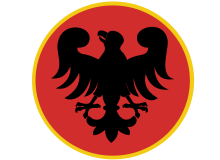Legio VI Herculia

Legio VI Herculia was a Roman legion levied by Diocletian in the end of the 3rd century, and was still in service at the beginning of the 5th century. The cognomen of the legion refers to Hercules, to whom Diocletian's colleague, Maximian (also known as Herculius, "the man like Hercules"), was devoted and identified.
The VI Herculia was stationed, together to her sister legion V Iovia, in Pannonia Secunda, a new province created with the segmantation of the old Pannonia province. The legion received the ordinal "Sixth" because in Pannonia there were already four legions, plus the V Iovia. The purpose of the legion, having her permanent camp in Teutoburgium (near modern Vukovar ) and an advanced castellum in Onagrinum, was to protect the imperial residence of Diocletian in Sirmium (Illyricum).
The Notitia Dignitatum locates the legion still in Illyricum at the beginning of the 5th century.[1]
It is possible that some men from this legion and from the V Iovia formed the Herculians and Jovians, the new imperial bodyguard of Diocletian. If this identification is correct, VI Herculia men had the appellative Martiobarbuli, since they were expert in throwing small darts, martiobarbuli, carried by five in the inside of their shields.[2]
See also
References
Notes
- ↑ Notitia Dignitatum, occ XXXII v. 45 "praefectus legionis sextae Herculeae cohortis quintae partis superioris Aureo monte", v. 47 "praefectus legionis sextae Herculeae, Teutiborgio", v. 48 "praefectus legionis quintae Ioviae et sextae Herculeae in castello Onagrino".
- ↑ Vegetius, De Re Militari, book i.